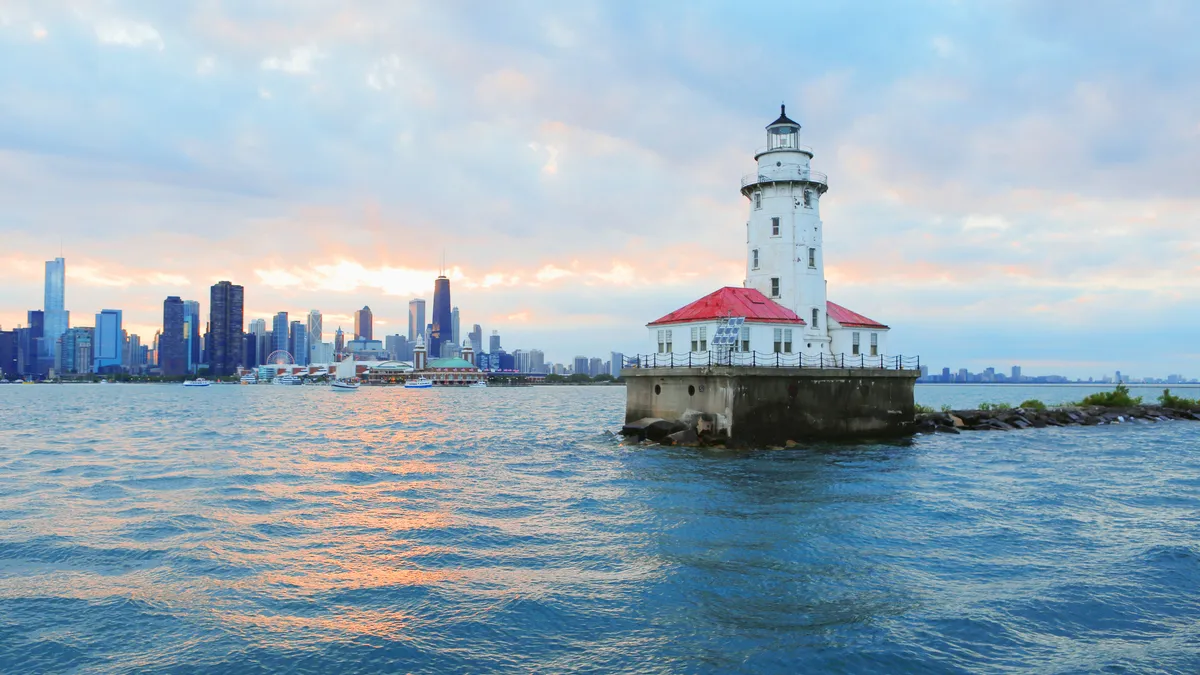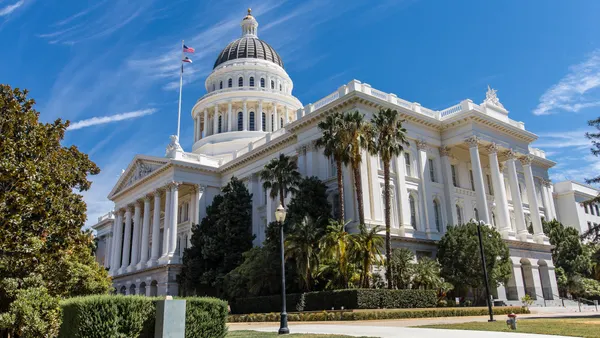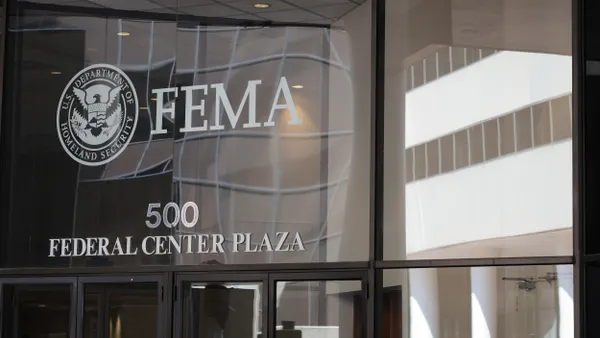Dive Brief:
- The Council of the Great Lakes Region is developing strategies for implementing the five-year circular action plan it released this year, according to president and CEO Mark Fisher. CGLR anticipates it will announce the first implementation steps early in 2023.
- CGLR developed the plan to guide efforts by regional partners in the U.S. and Canada to boost recycling and eliminate litter, specifically plastics. The action plan highlights three priority areas: cleaning up the Great Lakes and preventing plastic waste from entering the environment, investing in plastics recovery and processing, and facilitating a supply of high-quality plastics for recycling through consumer education and behavior changes.
- Progress toward “a future without waste” will require more “aggressive action” on policy change and infrastructure investment, and “we need to see more established markets for this recycled content so we can out-compete virgin materials,” Fisher said.
Dive Insight:
The Great Lakes account for 21% of the world’s freshwater, and plastic waste in this environment has become a pressing concern. A U.S. Chamber of Commerce Foundation report estimated in 2020 that 81% of the Great Lakes region’s postconsumer waste ends up in landfills, even plastics that have value when recycled. CGLR’s plan advances solutions to reduce plastic waste in the region’s waterways and shores.
“We know that we've got a serious problem in this region,” Fisher said. “Our focus right now is really putting into place the clear steps and actions that we need to see in order for us to get to that zero-waste future.”
CGLR commissioned a recycling best practices gap analysis from Resource Recycling Systems to inform its action plan development. The analysis offered a better understanding of where the region stands now in terms of waste collection, processing, education and funding, as well as areas for improvement. This regional analysis was the largest that RRS has completed to date, as the firm usually examines information from the local and city level, said Matt Todd, senior consultant at RRS.
The Great Lakes region is defined as including portions of Illinois, Indiana, Michigan, Minnesota, New York, Ohio, Pennsylvania and Wisconsin, as well as the Canadian provinces of Ontario and Quebec. The action plan draws on the individual states’ and provinces’ best practices for addressing plastics in the environment and synthesizes them into a cohesive strategy, Fisher said, as opposed to working in silos.
Multiple organizations, higher learning institutions and companies — including the Alliance to End Plastic Waste, Northwestern University and packaging manufacturers Dow, Dart and Pregis — provided financial support and/or insight for the initiative.
CGLR wants collaborators to overcome challenges in solving plastic waste problems, such as developing plastic packaging recycling supply chains and markets. Although investments in new technologies are modernizing MRFs, the partners need to amplify and accelerate that work, Fisher said.
The team is currently looking at projects, partnerships, investments and other funding necessary to advance the plan’s top-tier initiatives. For example, the first five years must focus on achieving 50% recycling in the region as the first major milestone toward a circular economy, Fisher said. The team also aims to grow the number of corporate partners involved in the effort.
“That’s going to provide our baseline funding for supporting our work,” Fisher said. “We also know that in order to really achieve some of the big changes around collection and processing, we’re going to have to use our collective network voice to attract more investment into the region in these priority pillars.”
Down the line, the partners will also focus on engaging with consumers. Educational campaigns can help to improve consumers’ recycling knowledge and program participation, and getting consumers on board could provide additional voices to help drive policy changes.












